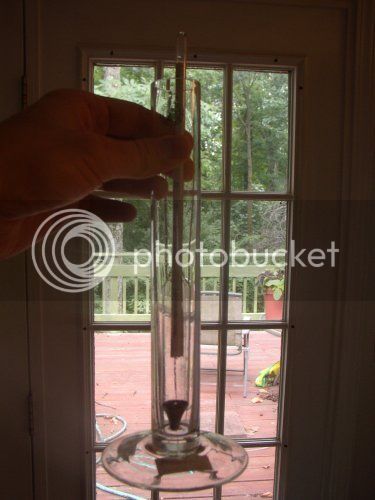Calvinfan1
Well-Known Member
My frustration with hydrometers continues to grow. I know there has to be a better and more accurate way to take an original and final gravity reading. What are you using?











One of the points most people miss is accurate volumes. If you test your wort without knowing that the volume you have is actually that volume then the reading is flawed so no matter how accurately you read the hydrometer.
When taking hydrometer readings 4 things have to be accurate.
- Calibration of the hydrometer
- Volume of the wort
- Temperature of the wort plus correction if not at the calibration temperature (testing at calibration temperature is best)
- Accuracy of the reading
What problems are you having? I will say - buying a clear cylinder to float the hydrometer in has helped a lot (rather than using the tube that the hydrometer came in). Heck - Ive been using an el cheapo $0.99 hydrometer that only measures brix and potential alcohol with a big red "bottle here" lineIt does the trick with the right on-line calculators.
I guess the biggest problem is that it seems to always stick to the side of the thief. I've tried using various amounts of a sample, I spin it, etc. etc. but the readings seem to bounce all over the place. Now the hydrometers have wider bases which seem to only increase the problem.
Actually, if all you want to know is the Specific Gravity of your sample, then the volume is irrelevant. If you want to use that value to calculate efficiency or to figure out how much water to use to dilute to a certain SG, then, yes, you need an accurate volume.

Actually, if all you want to know is the Specific Gravity of your sample, then the volume is irrelevant. If you want to use that value to calculate efficiency or to figure out how much water to use to dilute to a certain SG, then, yes, you need an accurate volume.
Moonpile,
You are correct.
The whole point of my response was that even though you take a reading of the wort if you then use volumes that are not correct you will get false OG, FG For alcohol or efficiency calculations. What would be any other point of taking a reading anyway?
Are there any electronic hydrometers?